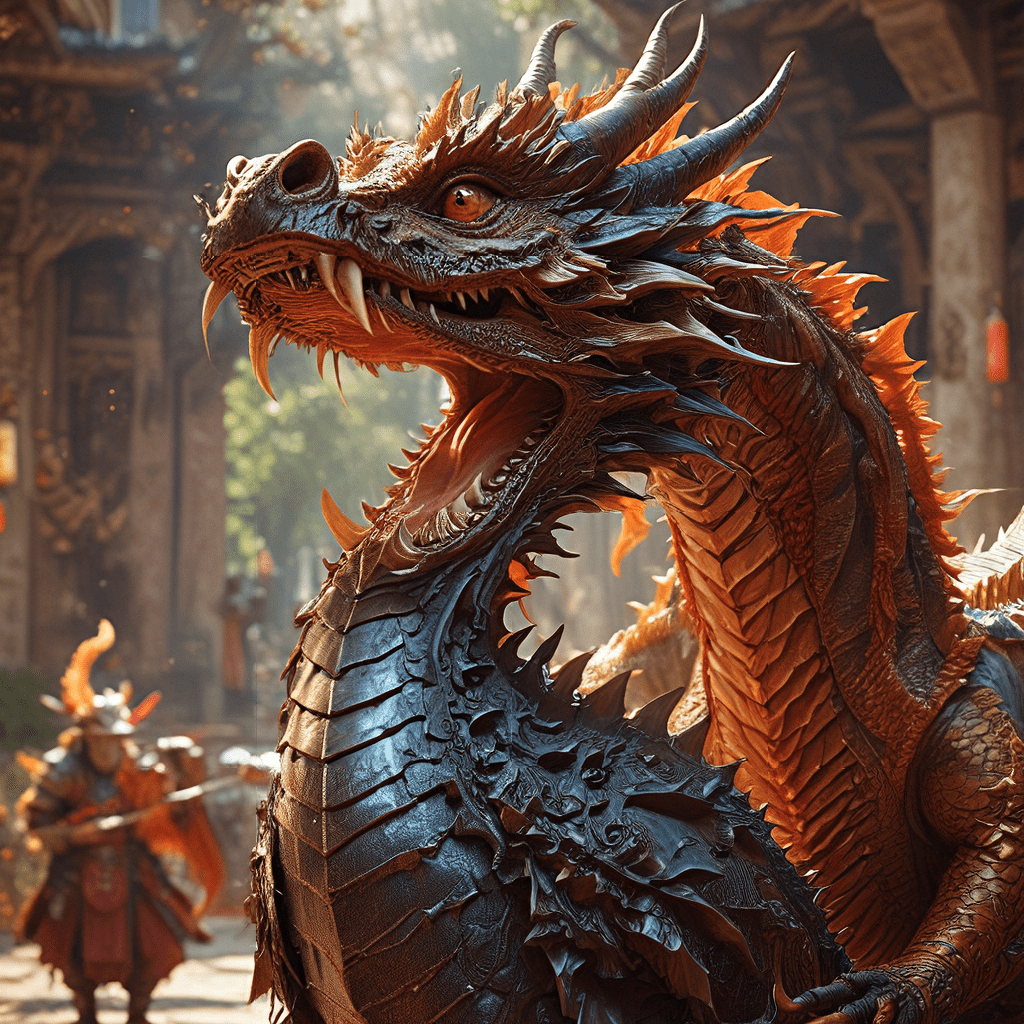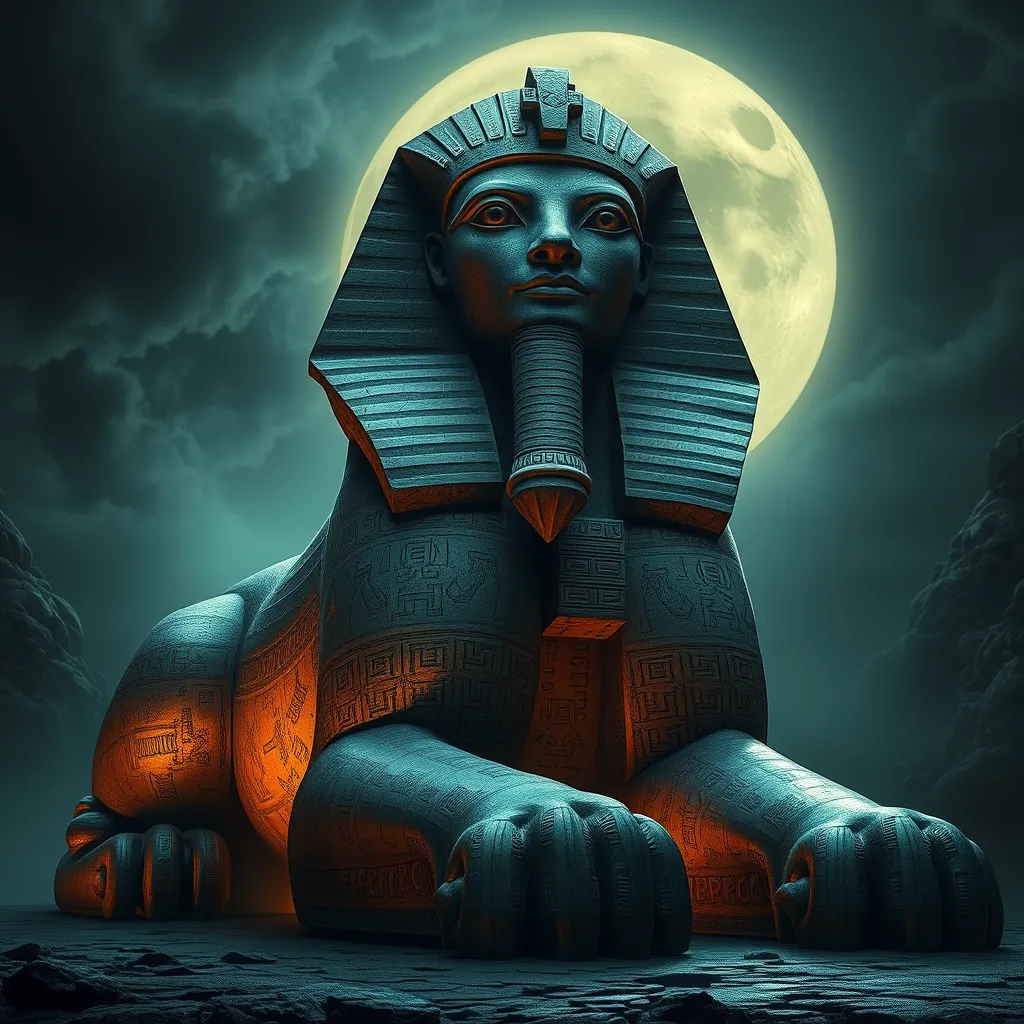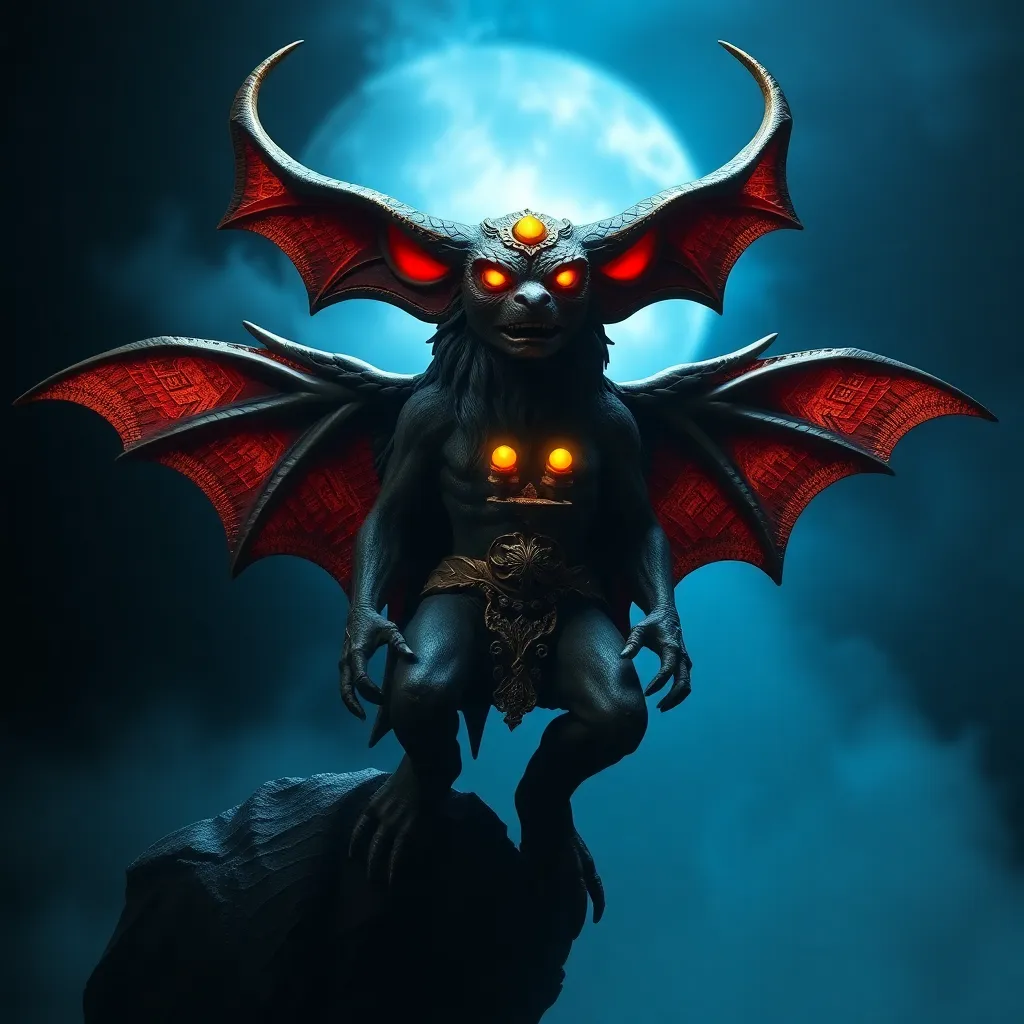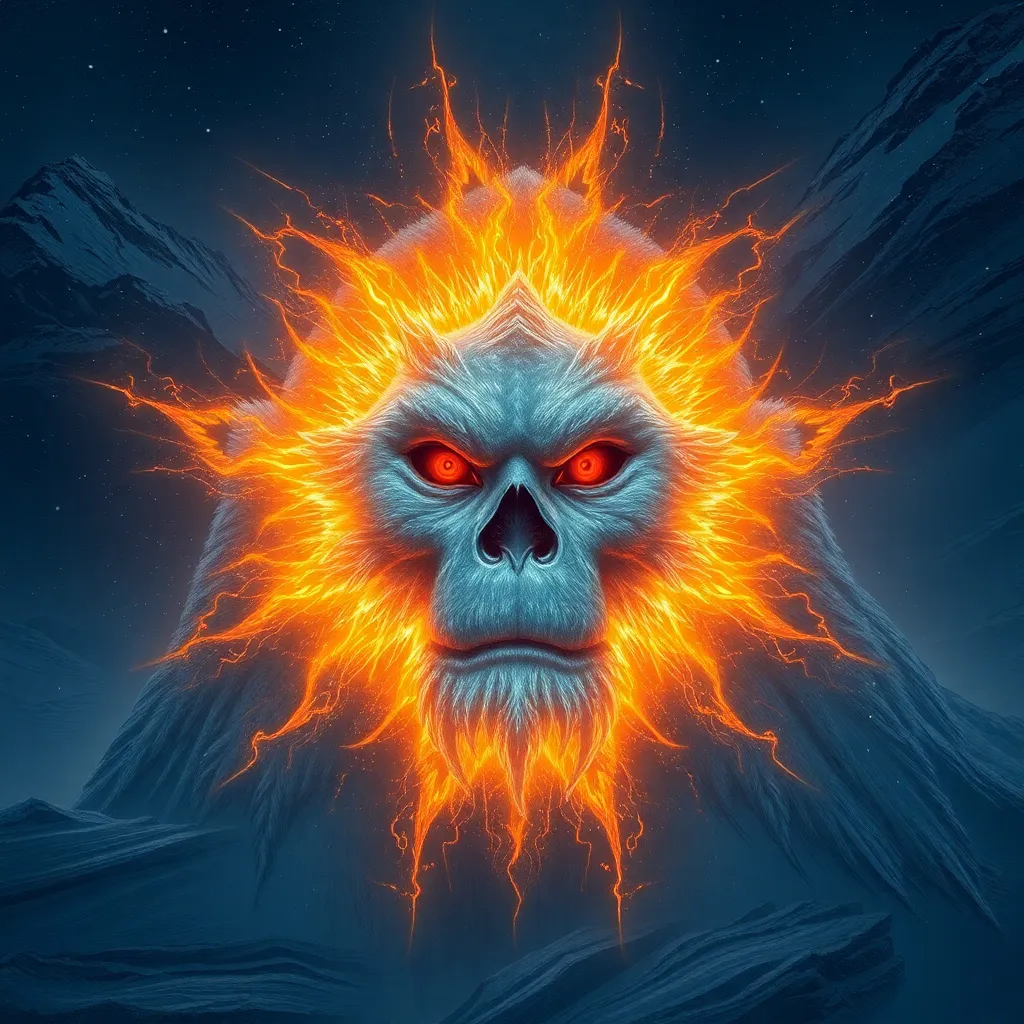The Dragon: A Tapestry of Myth and Symbolism
The dragon, a creature woven from the threads of myth and legend, holds a captivating place in the human imagination. This awe-inspiring beast, often depicted as a serpentine creature with scales, wings, and fire, has captured our minds for centuries, appearing in countless stories, myths, and folklore. From ancient cave paintings to contemporary fantasy novels, dragons have left an indelible mark on human culture. Their enduring presence speaks to the power of symbolism, the fascination with the unknown, and the enduring human longing to understand the forces that shape our world.
Dragons are more than just fantastical creatures; they are embodiments of powerful archetypes, reflecting deep-seated beliefs, fears, and aspirations. Their presence in diverse cultures, from the East to the West, suggests a universal human response to the mysteries of nature, the awe-inspiring power of the elements, and the forces that lie beyond our comprehension. To truly understand the dragon, we must delve into the intricate tapestry of symbolism that surrounds them, unraveling their multifaceted meanings and the profound messages they convey.
From Sky Serpents to Guardians of Treasures: The Dragon in Global Mythology
Dragons are a truly global phenomenon, appearing in countless myths and legends across the world. Their forms and characteristics vary widely, reflecting the unique cultural contexts in which they emerge. From the winged serpents of ancient Mesopotamia to the majestic, fire-breathing dragons of European folklore, these creatures have taken on diverse guises, each offering a unique window into the beliefs and values of the cultures that created them.
In ancient China, dragons were revered as benevolent beings, associated with wisdom, power, and good fortune. The Chinese dragon, often depicted with scales, whiskers, and a long, sinuous body, was believed to control the elements, especially water, and was seen as a bringer of rain and prosperity. They were also closely associated with emperors and royalty, symbolizing imperial power and divine mandate.
In Western cultures, dragons often take on a more menacing persona, symbolizing chaos, destruction, and the forces of darkness. They are often portrayed as fierce and formidable creatures, capable of breathing fire and wreaking havoc on the land. These dragons are frequently associated with battles against heroes, representing the challenges and obstacles that must be overcome on the path to self-discovery and enlightenment.
In Norse mythology, the dragon Fafnir, a creature of immense power and greed, embodies the dangers of avarice and the corrosive power of wealth. His transformation from a man into a dragon reflects the corrupting influence of material possessions and the potential for human nature to fall prey to greed.
The Dragon’s Breath: Power, Destruction, and Renewal
One of the most striking and enduring features of dragons is their ability to breathe fire. This fiery breath symbolizes the power of transformation and the ability to both destroy and create. In many cultures, fire is associated with both creation and destruction, representing the cyclical nature of life and the constant flow of energy in the universe.
The dragon’s fire can be seen as a metaphor for the destructive power of nature, the unpredictable forces that can bring both devastation and renewal. Volcanoes, lightning strikes, and wildfires, while potentially dangerous, can also clear the way for new growth, fertilizing the soil and creating space for new life. The dragon’s fire, therefore, symbolizes the paradoxical nature of destruction, which can also be a force for renewal.
In some myths, the dragon’s fire is depicted as a purifying force, capable of burning away impurities and bringing forth a new beginning. The Phoenix, a mythical bird that rises from its own ashes, is often associated with the dragon’s fire, symbolizing rebirth, resurrection, and the cyclical nature of life and death.
Dancing with the Divine: The Dragon as a Symbol of Cosmic Forces
Dragons are often associated with the cosmos and the forces that govern the universe. Their serpentine bodies, which often twist and turn, can be seen as representations of the movements of celestial bodies, such as planets and stars. The dragon’s ability to fly, to ascend into the heavens, further reinforces this connection to the divine and the transcendent realm.
In some cultures, dragons are seen as mediators between the earthly and the celestial realms. They are believed to possess knowledge of the stars, the secrets of the universe, and the hidden forces that shape our world. Their presence often marks sacred sites, such as mountains, caves, and springs, which are considered portals to the underworld or the heavens.
Dragons also embody the duality of nature, the interplay of light and darkness, creation and destruction. They often represent the forces of chaos and the unpredictable nature of the universe, reminding us that the world is not always orderly and predictable. However, within this chaos, there is also a sense of balance and cosmic order, which the dragon ultimately upholds.
The Dragon’s Dance of Creation: Cosmogonic and Chthonic Connections
Dragons frequently appear in creation myths, often playing a significant role in the shaping of the world. Their association with the earth, the underworld, and the forces of nature connects them to the primordial forces that brought forth the universe. Dragons are often depicted as guardians of the earth, representing the primal power of the natural world and the deep connection between humans and the earth.
In many cultures, dragons are associated with the underworld, the realm of the dead and the source of life-giving forces. They are often seen as guardians of this realm, controlling the passage between the living and the dead. This connection to the underworld highlights the cyclical nature of life and death, suggesting that the dragon represents the eternal cycle of creation and destruction.
The dragon’s connection to the earth also emphasizes their role as guardians of natural resources, particularly water and minerals. Their guardianship of these vital elements highlights their connection to the earth’s life-giving forces and the importance of respecting the natural world.
The Dragon’s Dance of Creation signifies the transformative power of the dragon, their ability to shape and reshape the world. They are the embodiment of primal forces, reminding us of the power and mystery of the natural world and the importance of understanding our place within it.
The Dragon and the Hero: A Dance of Conflict and Transformation
In countless stories and myths, the dragon often stands as a formidable antagonist, a creature that tests the strength, courage, and ingenuity of the hero. This epic battle between hero and dragon represents more than just a clash of physical might; it symbolizes the struggle against inner demons, the overcoming of fears, and the quest for self-discovery. The hero’s triumph over the dragon often signifies a journey of transformation, a process of facing one’s deepest fears and emerging stronger, wiser, and more empowered.
The hero’s battle with the dragon can be seen as a metaphor for the challenges we face in life, the obstacles that we must overcome to reach our full potential. The dragon represents the forces that threaten our growth and progress, the fears and doubts that hold us back. The hero, through their bravery, determination, and resourcefulness, embodies the potential for human resilience and the power to overcome adversity.
The hero’s victory over the dragon often involves the acquisition of knowledge, wealth, or a powerful artifact that helps them on their journey. This symbolizes the rewards that come from facing our fears and confronting our inner demons. The hero’s transformation is not simply about physical victory but about gaining wisdom, strength, and a deeper understanding of themselves and the world around them.
In many myths and legends, the dragon’s defeat marks a turning point in the hero’s journey. It signifies a shift in consciousness, a recognition of their own power and capacity for change. The dragon, once a symbol of fear and oppression, is transformed into a source of wisdom and a reminder of the hero’s own inner strength.
The Dragon’s Treasure: Guardianship, Wealth, and the Power of Knowledge
Dragons are often depicted as guardians of hidden treasures, hoards of gold, precious jewels, and magical artifacts. This symbolism reflects the dragon’s association with wealth, power, and knowledge. The treasures guarded by dragons represent not only material riches but also the hidden wisdom and knowledge that lie beneath the surface of our world.
The dragon’s role as a guardian of treasure speaks to the idea that true wealth and value are not always readily apparent. They may be hidden away, guarded by powerful forces, and require courage, determination, and often a deep understanding to uncover. The hero who conquers the dragon and claims their treasure is often rewarded with not only material riches but also with the wisdom and insights that come from facing the unknown and challenging the status quo.
The dragon’s treasure can also be seen as a representation of the potential for human creativity and the untapped resources that lie within us. Just as the dragon’s hoard represents a wealth of material goods, our own minds and imaginations hold a vast storehouse of knowledge, inspiration, and creative potential. By facing our inner dragons, confronting our fears and doubts, we can unlock the treasures that lie within and unleash our full potential.
The dragon’s treasure can be a reminder that the most valuable and lasting riches are not always material possessions. They are often the intangible treasures of knowledge, wisdom, and personal growth, which are often discovered through hard work, dedication, and the courage to face our own inner dragons and unlock the potential that lies within us.
The Dance of the Dragon King: Royalty, Authority, and the Sacred
In many cultures, dragons are associated with royalty, authority, and the sacred. They often embody the power and majesty of rulers, symbolizing their divine right to rule and their connection to the forces that govern the universe. The dragon’s presence in royal symbols, heraldry, and mythology speaks to the enduring association between these powerful creatures and leadership, power, and the divine.
In China, the dragon is considered a symbol of imperial power, representing the emperor’s divine right to rule and his connection to the forces of nature. The Chinese dragon, with its powerful presence and its association with water, rain, and prosperity, epitomizes the emperor’s role as a benevolent ruler, responsible for the well-being of his people and the prosperity of the land.
In Western cultures, the dragon’s association with royalty is often more complex and ambiguous. While dragons are sometimes depicted as powerful and benevolent creatures, they are also frequently associated with the forces of chaos and rebellion, challenging the established order and representing the potential for unrest and social upheaval.
The dragon’s presence in the mythology and symbolism of different cultures highlights the multifaceted nature of power and authority. Dragons represent both the potential for benevolent leadership and the dangers of unchecked ambition, reminding us of the importance of balance, wisdom, and a deep understanding of the forces that govern our world.
The Dragon’s Shadow: Fear, Fearlessness, and the Unknown
The dragon’s presence in mythology often evokes feelings of fear, awe, and mystery. They represent the unknown, the forces that lie beyond our comprehension, and the dangers that lurk in the shadows. Their immense power and unpredictable nature make them both fascinating and terrifying, reminding us of the limits of human knowledge and the power of the natural world.
The dragon’s shadow, however, can also be seen as a symbol of our own inner fears and the challenges that we face in life. Our fears can be as powerful and intimidating as a dragon, holding us back from realizing our full potential and living our lives to the fullest.
Confronting our inner dragons, facing our fears and doubts, is an essential part of personal growth and self-discovery. It is a journey that requires courage, resilience, and a willingness to step outside of our comfort zones and embrace the unknown. By conquering our inner dragons, we gain the strength and wisdom to overcome the challenges in our lives and become the best versions of ourselves.
The dragon’s shadow, while often a source of fear, also reminds us of the beauty and mystery of the world. It reminds us that there is always something new to learn, something unknown to explore, and that the greatest adventures often lie outside of our comfort zones.
A Unified Dance: Synthesizing Dragon Symbolism Across Cultures
Dragons, despite their variations across cultures, share common threads of symbolism that speak to the universal human experience. They embody the duality of nature, representing both creation and destruction, chaos and order, fear and fascination. They are guardians of knowledge, protectors of treasures, and symbols of power and authority.
Dragons are powerful archetypes, reflecting our deepest fears and aspirations, our longing to understand the forces that shape our world, and our fascination with the unknown. By exploring the symbolism of dragons across cultures, we gain a deeper understanding of the human condition, the challenges we face, and the potential for growth, transformation, and self-discovery that lies within us.
FAQ
**What is the significance of the dragon in mythology?**
Dragons are powerful mythological creatures that embody various aspects of the human experience, including fear, fascination, transformation, and the power of nature. They often represent forces beyond our control, the unknown, and the cyclical nature of life and death.
**What are some common traits of dragons across different cultures?**
Despite cultural variations, dragons often share common traits such as serpentine bodies, wings, fire-breathing abilities, and a connection to the earth, the underworld, and the divine. They are frequently associated with wealth, power, knowledge, and the forces that govern the universe.
**What does the dragon’s battle with a hero symbolize?**
The classic battle between a dragon and a hero represents the confrontation with inner demons, the overcoming of fears, and the quest for self-discovery. The hero’s victory often signifies a journey of transformation and a new understanding of oneself and the world.
**How are dragons associated with royalty and authority?**
Dragons are often depicted as guardians of kings and emperors, representing their divine right to rule and their connection to the forces of nature. They embody power, wisdom, and a connection to the sacred.
**Why are dragons seen as guardians of treasures?**
Dragons are often depicted as guardians of hidden wealth, representing the idea that true value and treasure are not always readily apparent. They represent the untapped potential that lies within us and the importance of facing our fears to unlock it.



